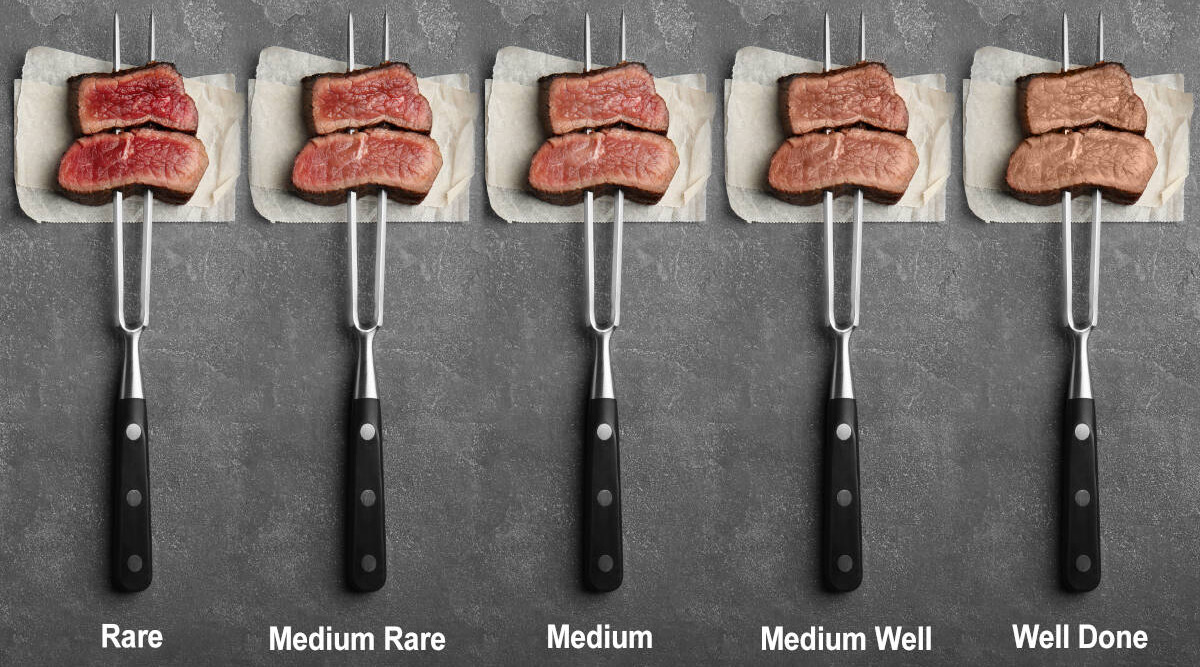
In this essential article for anyone who loves steak, you’re going to learn everything you need to know about steak doneness levels, from “bloody as hell” to “burnt to a crisp.” (Bonus points if you can name that film!)
Topics covered include the look, feel, and temperature of every level of doneness and why you may or may not want to cook to a particular level. We’ll also address all your safety concerns, plus how to save your steak from becoming too well done due to the dreaded “carryover cooking.”
Besides burnt and unburned charcoal, very little about grilling food is as simple as black and white.
Think about all the options facing a griller for as basic a task as barbecuing a steak. What cuts will you choose? How will you season them? What cooker will you use? And, perhaps most importantly, how “done” do you want your steaks cooked?
To answer that last, crucial question, we present our steak doneness guide. Keep reading — the quality of your next steak may be at stake!
Jump to:
- 1 Steak Doneness Chart
- 2 The Different Degrees of Steak Doneness
- 3 What Does the USDA Say? And Why You Should Ignore It
- 4 How to Cook Steak To Your Chosen Doneness Level
- 5 How to Know When Steak Reaches Desired Doneness
- 6 Remove Steak from Heat While 5 Degrees Under and Rest it
- 7 Frequently Asked Questions on Steak Doneness
- 8 Final Thoughts
Steak Doneness Chart
Don’t worry if this chart doesn’t make total sense yet. It will by the time you’ve finished reading.
Save it or bookmark it for later, and refer back to it while you’re taking in the article — think of it as your steak doneness cheat sheet.
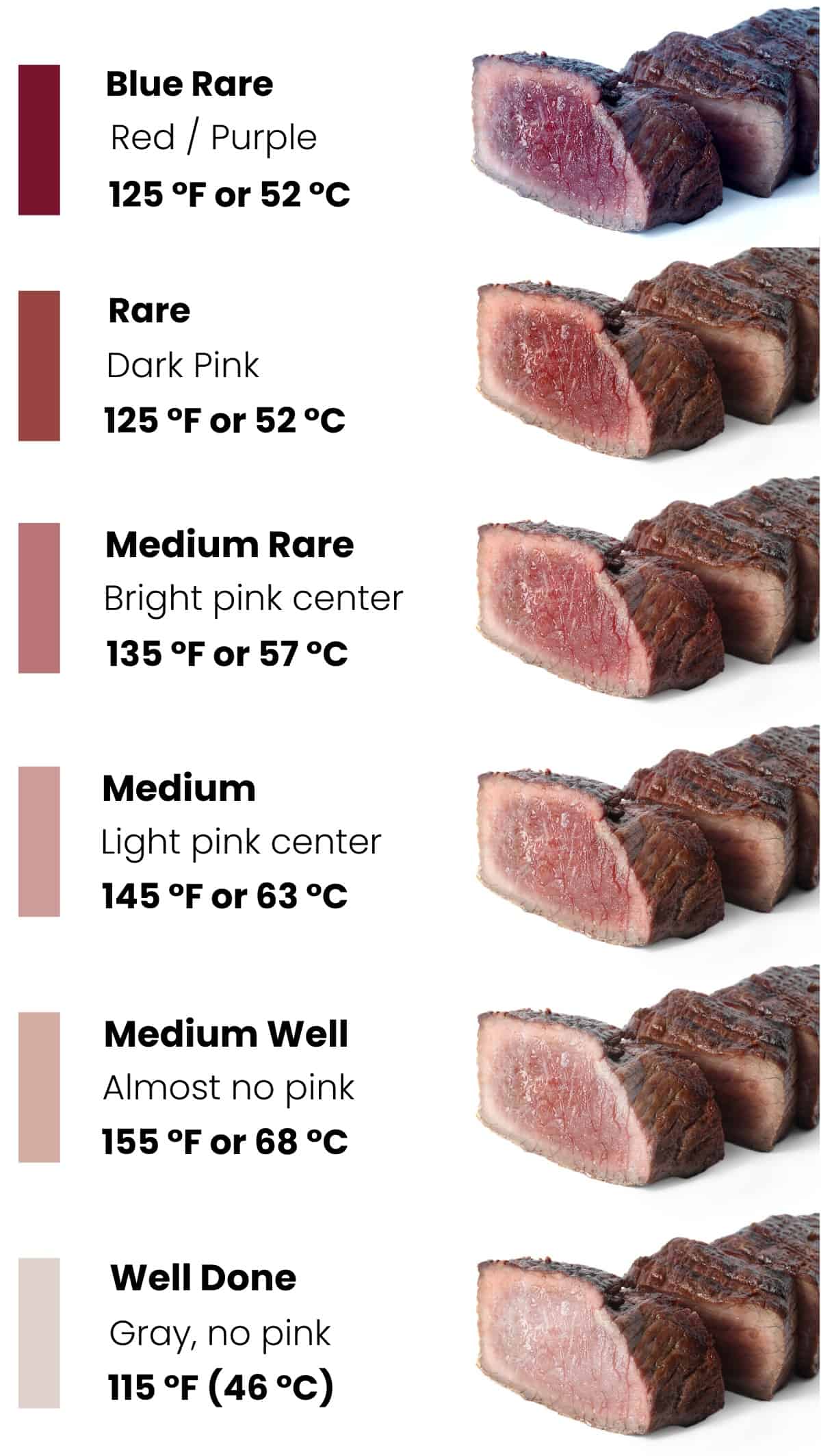
The Different Degrees of Steak Doneness
Let’s break down every level of doneness, so you know exactly what the terms mean and what to expect in terms of temperature and appearance.
Cooking times are based on a steak 1-inch thick and may need to be adjusted for thicker or thinner cuts.
Blue / Very Rare / Blood Rare
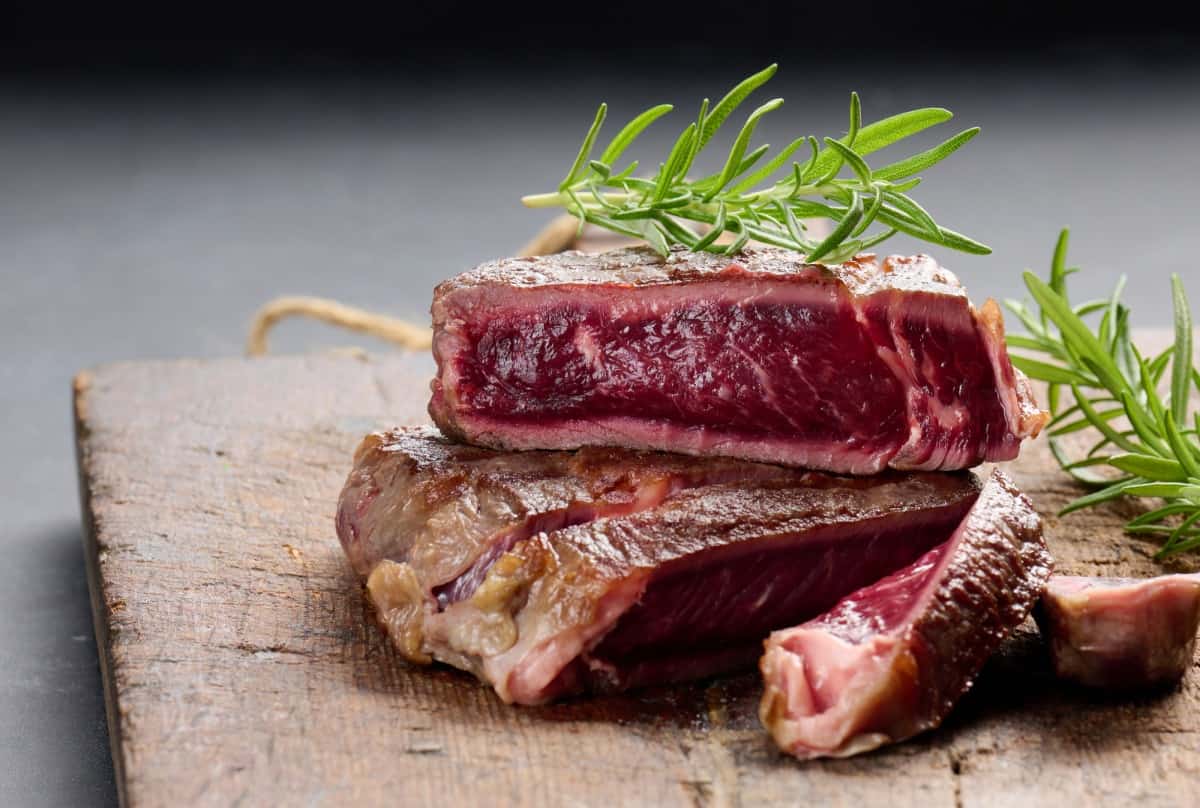
The least done of all steaks, blue rare steak is not far removed from raw meat or sashimi.
Blue steak is ready when it reaches an internal temperature of no more than 115 °F to 120 °F (46 °C to 49 °C). The outside should appear brown and properly seared on both sides, but cutting the steak open will reveal dark pink or red from top to bottom and side to side with, perhaps, a faint pink outline.
Texturally, blue steak feels very rubbery or gelatinous since it is still practically raw, and the inside may feel “cool” to the touch.
To cook a steak to blue, sear each side for 1 minute at 450 °F and remove from heat. You will likely need to sear the edges using tongs.
Rare
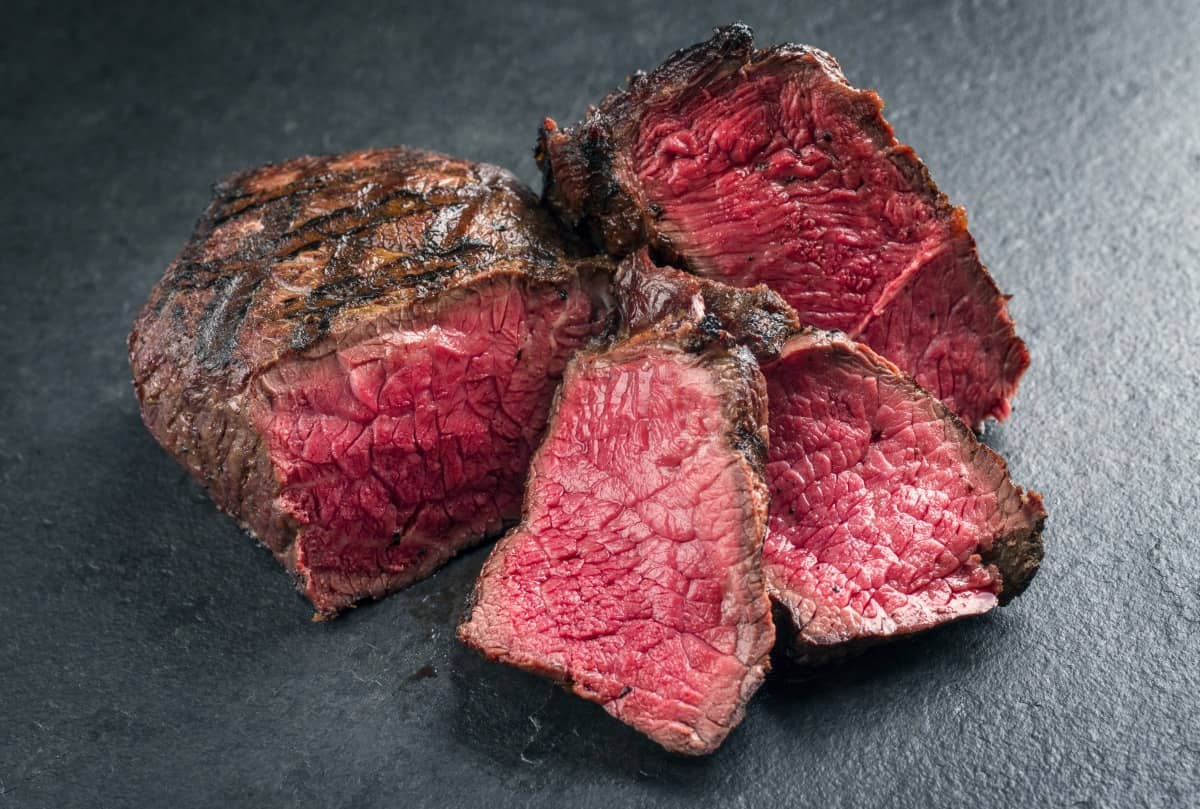
Next on the doneness chart, rare is the least done that most people will opt for and is best suited to very lean, almost fat free steaks such as flat iron steak and top sirloin steak.
You reach rare when the internal temperature is 120 °F to 130 °F (49 °C to 54 °C). Seared and brown all over, a cross-section shows a medium to dark pink center with light pink edges. A rare steak will have plenty of give when touched, but with a hint of resistance.
For the perfect rare steak, sear each side for 2½ minutes at 450 °F and then take away from the heat. The edges may need a quick sear with the tongs.
Medium Rare
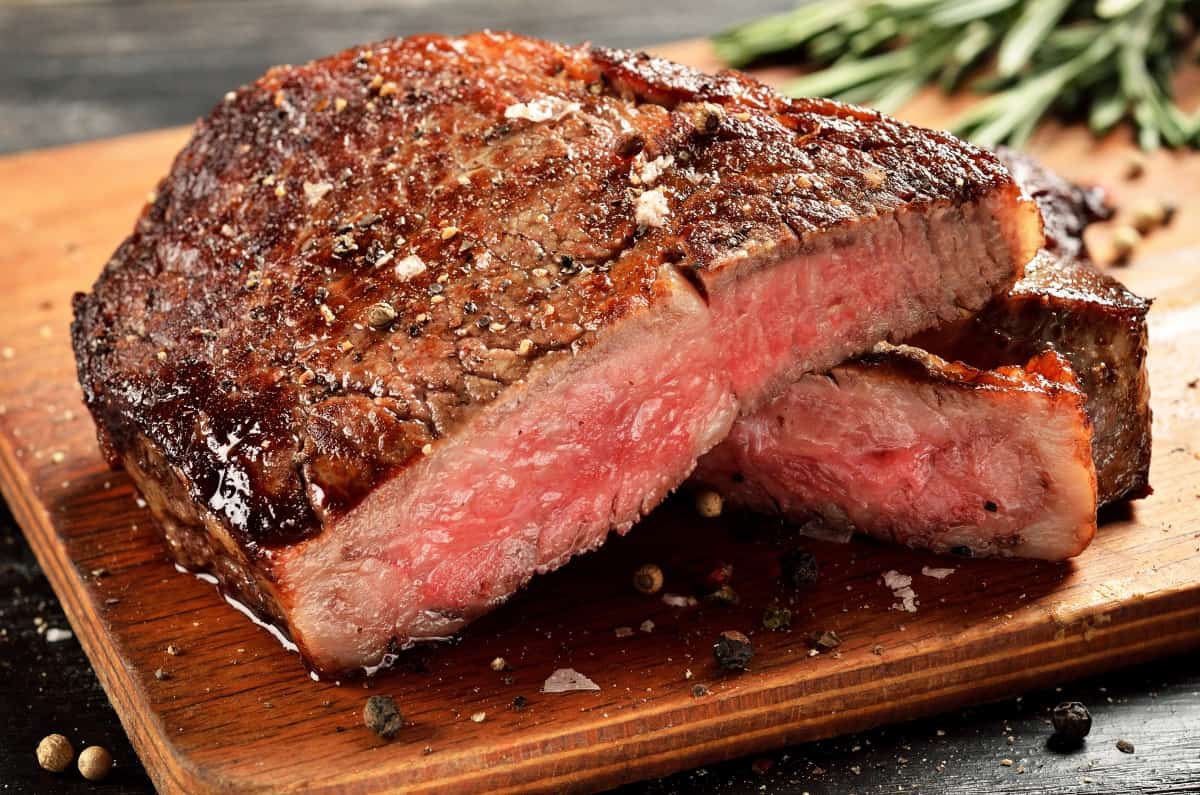
Climbing one more rung on the doneness ladder, we reach the ever-popular medium-rare. Most steaks are best cooked to this doneness level, with the most popular being ribeye, porterhouse, flank, filet mignon, and hanger steaks.
The reason for cooking your steaks to medium rare, and not settling at rare, is because connective tissues and intramuscular fat is tough and chewy if not rendered down by enough heat. So all but the leanest of steaks should be taken to at least medium rare for most people.
Your target internal temperature is 130 °F to 140 °F (54 °C to 60 °C), with a beautiful, deep brown sear.
Cutting into a medium-rare steak exposes nearly equal-sized stripes — light pink at the top and bottom and a darker pink across the middle. The touch test should feel slightly springy and soft but not gel-like.
The ideal searing time is 3 to 3½ minutes at 450 °F on each side before removing from the grill.
Medium
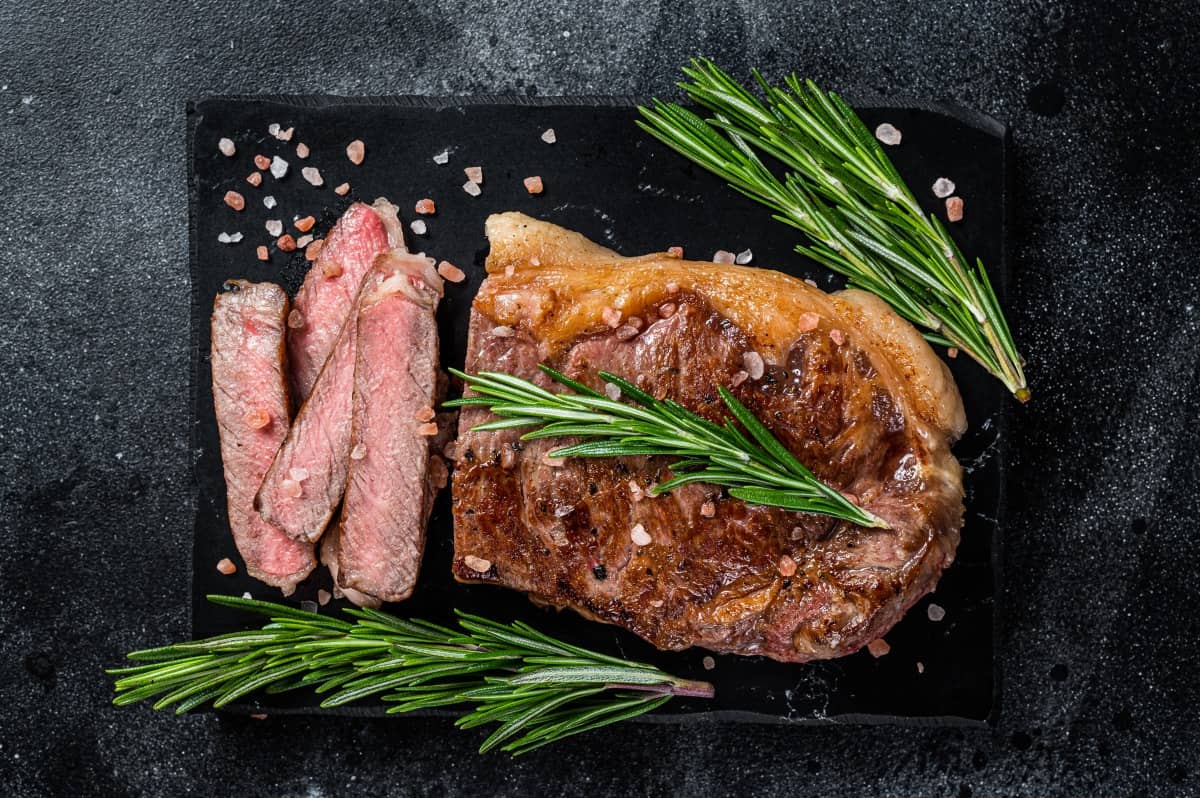
Another popular level of doneness, medium is just that: not rare in any way, but not yet overdone, either. A few examples of good cuts to take to medium will be prime rib (for some people who really do not like chewy fat and will not just eat around it), skirt steak, and short ribs.
The internal temperature for medium is no less than 140 °F to 150 °F (60 °C to 66 °C).
Inside, you’ll find just a touch of light pink across the core of the steak and pale brown surrounding it. When touched, the steak should feel moderately firm but with a bit of springiness.
Be patient, and sear your steak on a 450 °F grill for 4 minutes on each side and then move it to a plate.
Medium Well
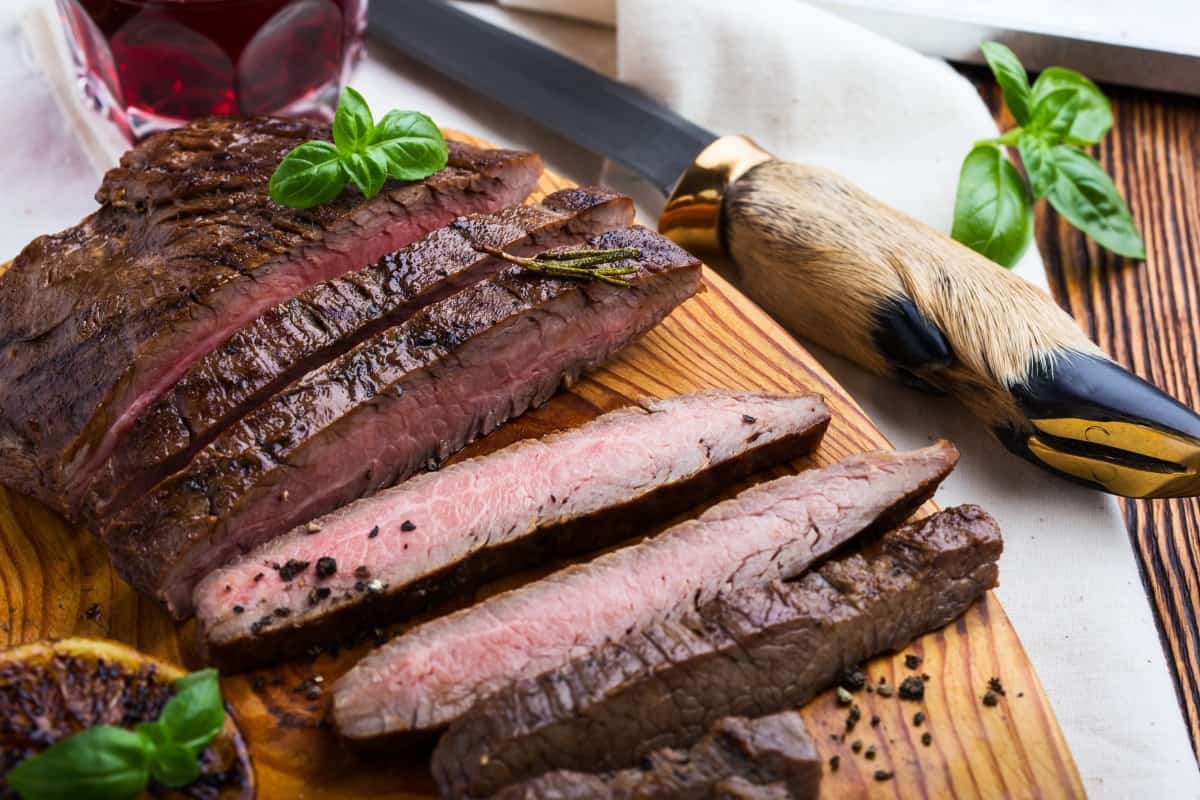
We’re almost as done as done gets at this point.
Steak cooked to medium-well will only have the faintest hint of pink in the middle. Inserting a thermometer should produce a reading of 150 °F to 160 °F (66 °C to 71 °C).
Knife open your steak to expose so little pink you may have to ask someone else, “do you see any pink?” to be sure. Give it a poke, and it will feel firm with just a slight spring.
Cooking a steak to medium-well requires 5 minutes per side over searing heat (450 °F). If that’s not enough, you may want to move it to a cooler temperature zone (250 °F) on your grill to finish cooking without burning the outside.
Well
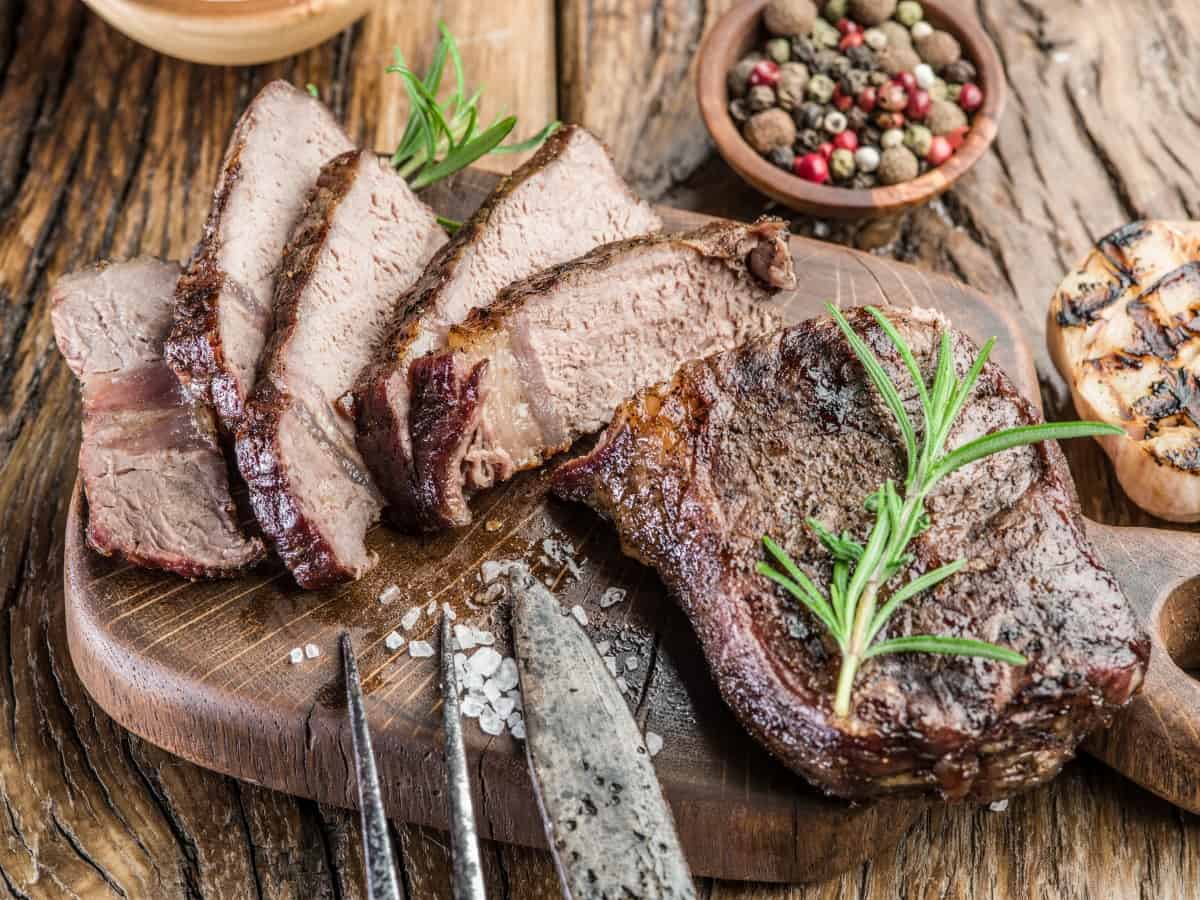
Now we reach the end of the line for doneness. Pass this point, and you pass the point of any hope of edibility.
The thermometer will read 160 °F (71 °C) or more, and there won’t be a speck of pink inside. Not surprisingly, it will feel very firm to the touch.
Grilling to well means at least 6 minutes of searing per side at 450 °F and possibly finishing at 250 °F for a few minutes, so it cooks right through without burning.
What Does the USDA Say? And Why You Should Ignore It
Most countries have a government agency that tries its best to keep us from killing ourselves with bad food. In the U.S., that’s the United States Department of Agriculture (USDA).
One of the things they do is tell us the safe temperatures for cooking and consuming every type of meat. That’s a great idea, but it gets a bit out of hand when it comes to steak.
According to the USDA, the safe internal temperature for eating steak is 145 °F (63 °C). If we went by that standard, we’d all be eating medium-well steak. No, thank you.
Why 145 F? That’s the minimum temperature required to kill bacteria living on the meat. The thing is, none of that bacteria can penetrate the surface. And searing the outside of your steak raises the temperature far beyond 145 °F, eliminating anything likely to make you sick.
That’s lucky for us because steak cooked to that level of doneness loses a lot of its juiciness and becomes much less tender.
How to Cook Steak To Your Chosen Doneness Level
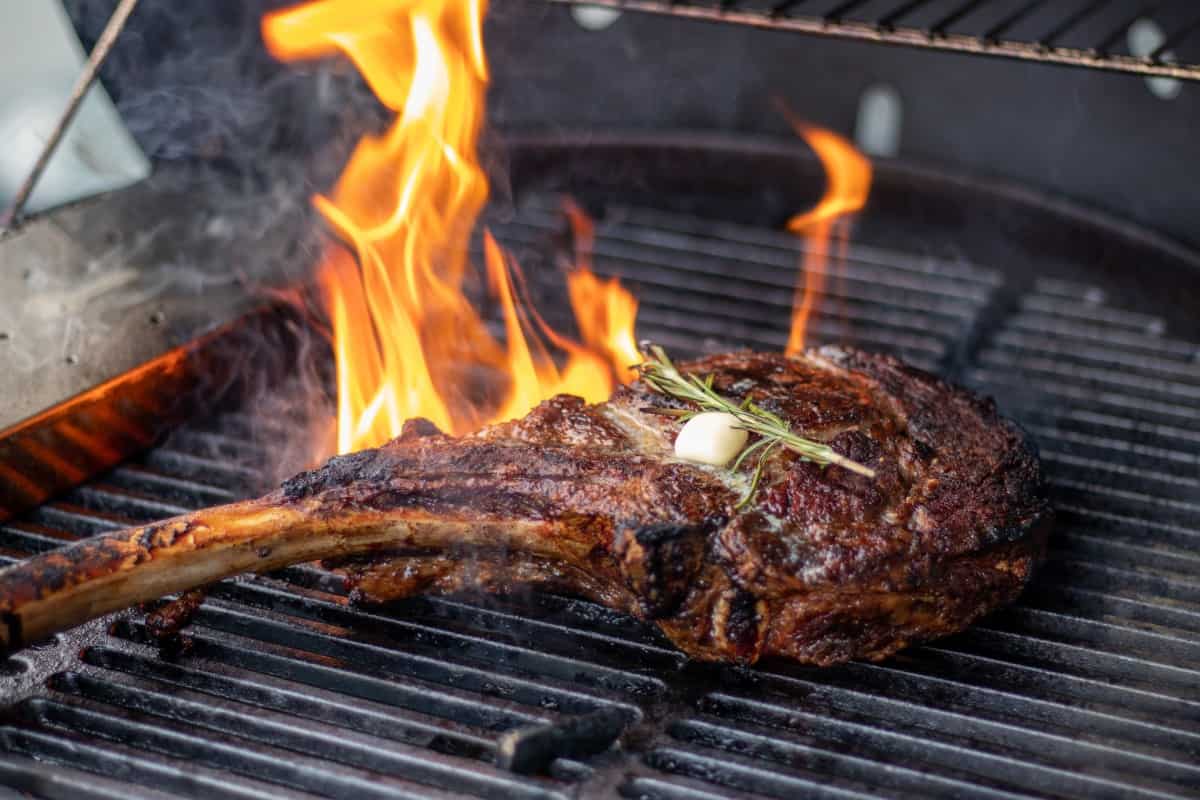
Cooking a steak on the grill isn’t hard, but there are some best practices you can follow to improve your chances of success.
Allow your thawed but cold steak to come up to room temperature by leaving it on a platter in the kitchen for up to 30 minutes. Trim any loose bits of fat that will turn into burnt gristle and/or cause flare-ups. Now’s the time to apply any rub or seasoning, too.
Preheat your grill to about 450 °F; a bit higher is fine, but lower temperatures won’t sear as well. First, you might want to brush cooking oil on the grates to prevent the meat from sticking to the grill.
Lay your steaks on the grate using sturdy tongs. Never use a fork; piercing the meat will cause the yummy juices to leak out. In general, the less you touch your steak, the better. Don’t give in to temptation and keep turning it over repeatedly, even if that means sacrificing the treasured diamond pattern of grill marks.
Typically, searing one side and then the other over high heat is enough.
How long you leave a steak on the grill will vary depending on the level of doneness you’re after. For steak done well, it may be necessary to let it finish over low heat to avoid burning.
How to Know When Steak Reaches Desired Doneness
Cooking your steak just the way you like it (or your guest asks for it) shouldn’t be left to guesswork. You want to be sure it’s done right.
Cutting into a steak that’s not cooked how you want is like opening socks for Christmas — boring socks, not the fun kind with pictures.
Here’s how you should be doing it, how you could be doing it, and how you should not be doing it.
Best Way: Use an Instant Read Thermometer
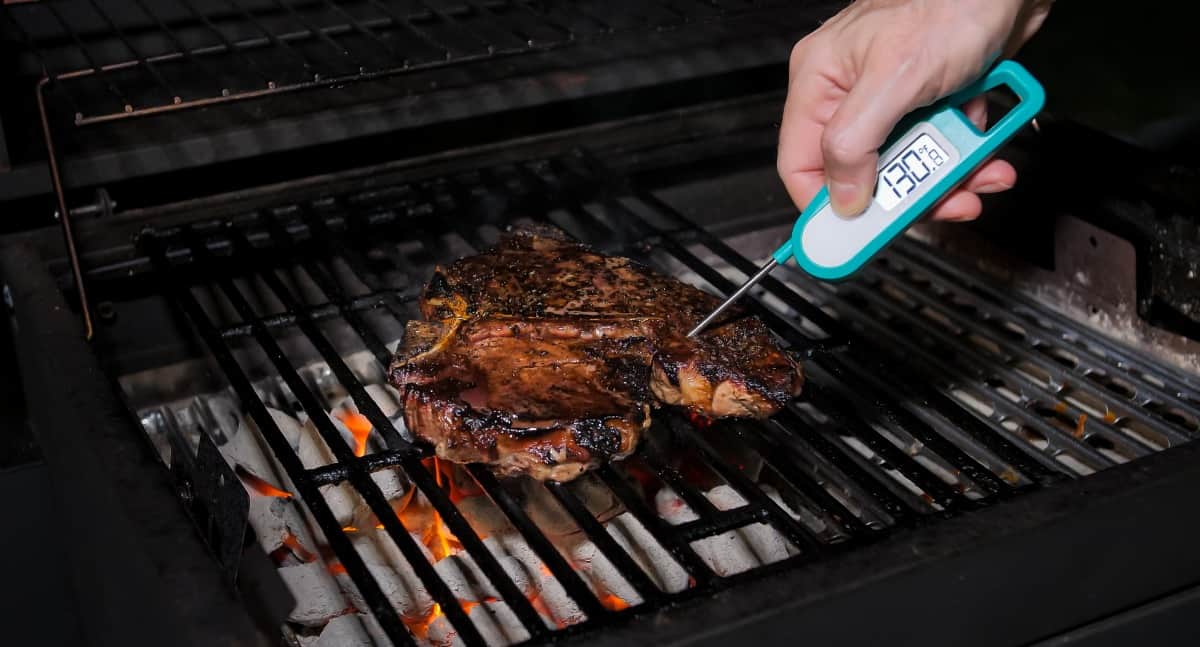
A steak is ready, not when the timer goes off, but when the correct internal temperature is reached. In fact, that’s the case for all meat: cook to temperature, not to time.
An instant-read digital meat thermometer tells you in just a few seconds the internal temperature of your steak.
Insert the probe into the side of the steak to minimize fluid loss and ensure the tip reaches the center of the meat. Using the temperature guide provided above, you should get perfect results every time.
Next Best: By Touching the Meat
If you read the section earlier describing the levels of doneness, you know that each level has a signature feel.
After you’ve gained some experience grilling steak, it becomes possible to judge whether it’s done as much as you want or not, with a reasonable amount of accuracy. Just give it a poke with your finger and compare what you feel to the chart. With a lot of repetition, you’ll get the hang of it.
Of course, it’s always best to verify your findings with a thermometer, and you can use this informal touch test to decide if it’s time to insert the probe. But, if you don’t have an instant-read thermometer handy, no doubt you have a hand handy. Use this method in a pinch, so to speak.
Unreliable: Using the Palm of Your Hand
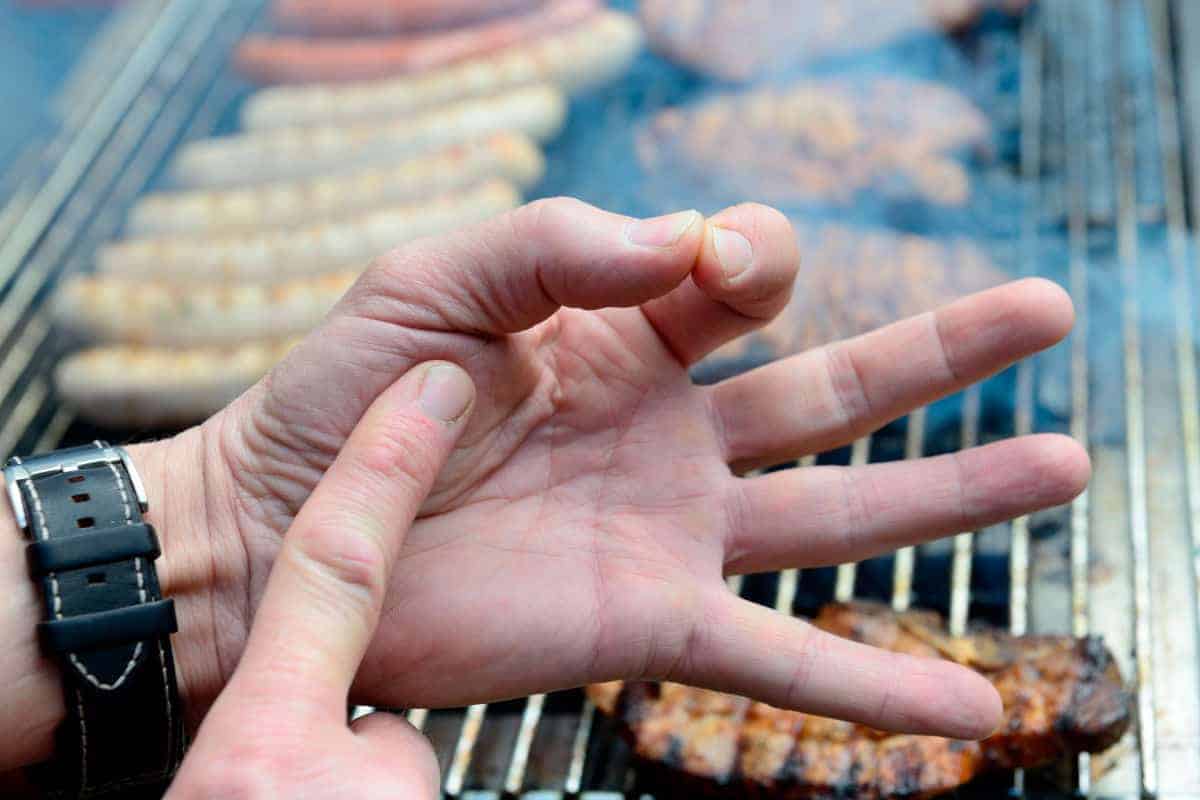
A popular method for gauging steak doneness you’ll see all over the internet is the palm method.
To sum it up, you touch various parts of your palm (some variants use fists or your face — but never both at once!) and compare the level of firmness to a touch test of the steak.
The squishy base of an unclenched thumb corresponds to rare, thumb-to-index finger equals medium rare, and so on around the digits. (Naturally, this only works if you have all your fingers.)
How accurate is it? Not very, as it turns out. Consumer Reports tested this method, and their results show an underestimation of as much as 25 °F. That’s a major difference!
The most egregious failure was probably the test for medium-well — the thumb said the steak was ready, and therefore about 145 °F. The truth? A thermometer inserted into the steak read just 127 °F. To me, that’s a perfect medium rare! But if you’re expecting a steak with no pink inside, that might put you off your meal entirely.
Our recommendation: newbies can use this method in conjunction with straight touching until you learn what the steak should really feel like. But, it would be best if you didn’t rely on anything other than a digital thermometer unless or until you’re a bona fide pitmaster.
Remove Steak from Heat While 5 Degrees Under and Rest it
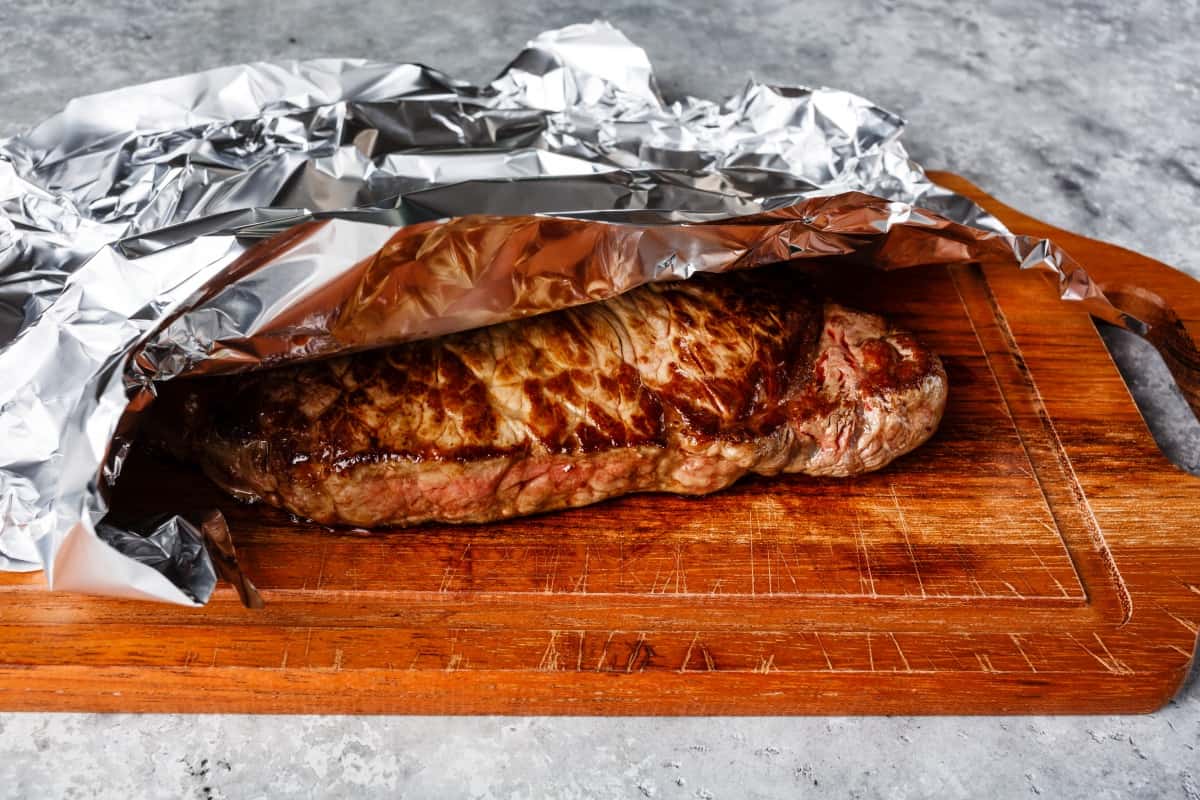
As explained, your steak is ready when it reaches the right temperature. The problem is, your steak has no idea that it’s done and will continue to cook, even after you take it off the grill.
Residual heat on the surface of the meat works its way inside after coming off the grill, causing the cooking process to go on for several more minutes. We call this “carryover cooking,” and it can make the difference between a perfectly cooked steak and one that’s overdone.
It’s easy to beat, however. All you have to do is remove your steak from the grill when it’s 5 degrees below your target. Allow it to rest for a few minutes, and the carryover cooking will bring it to where you want it to be. We discuss this more in depth in our guide to resting steak.
Frequently Asked Questions on Steak Doneness
Your most pressing questions on steak doneness are answered here.
Which Steak Doneness Is Best?
This is a highly subjective question and not a little controversial. We all like what we like, right?
If you ask chefs what they think, the consensus is that medium rare is the ideal level of doneness for flavor and tenderness for most cuts of steak. In fact, some really thick cuts, like filet mignon, are almost impossible to cook past medium-rare without destroying them.
Medium is acceptable in many cases, but chefs cringe and die a bit inside if you ask for anything more than that. Going past medium generally dries out even the juiciest steaks and toughens the muscle fibers.
Is Rare Steak Safe?
Rare steak is safe to eat, even though some restaurant menus have tiny, printed warnings about “undercooked meat” to protect their legal butts. To be fair, some lawyer probably insisted on that because no self-respecting chef ever would.
Searing meat at high heat kills all the surface bacteria, and that’s the only place you’ll find those little nasties on any decently handled cut of meat. Enjoy that juicy, red steak!
Is Medium Rare Steak Better Than Well Done?
Most people (including chefs) agree that a medium-rare steak tastes better than one that’s well done. It’s more tender, flavorful, and juicy because it hasn’t had all the moisture rendered out of it.
Naturally, flavor and texture are subjective. I probably have a dozen things in my pantry right now that you wouldn’t eat on a deserted island, and vice versa. But, we’d have to imagine that in a blind taste test, most diners will pick the medium-rare steak.
Nutritionally, there’s no difference between the two in terms of minerals and other nutrients. However, there is some concern that well-done meat might contain more carcinogens than meat that’s less cooked. As a one-off, that’s probably not a big deal. But, if you eat well-done meat regularly, it could be bad for your health.
Can Steak Be Undercooked?
So long as a steak is seared until it’s brown on the outside, it will be totally safe to eat.
It is theoretically possible to sear a steak for too short a period to kill any bacteria that may be present on the surface, but only by not searing it properly. If it has the signature dark brown seared crust, then it’s all good.
Is it Safe To Eat Pink Steak?
Absolutely! A steak that’s sufficiently seared on the outside but remains pink on the inside is perfectly safe (and delicious!) to eat.
Bacteria can only live on the surface of the steak, and the high temperature required for searing steak will kill all of it.
Is Medium Rare Steak Bloody?
Some people insist on eating steak cooked until they can’t see any blood because the sight makes them squeamish. Understandable — if there was any blood in a steak.
It’s a common misconception that the reddish liquid that comes out of raw or rare steak is blood. What you’re seeing is actually called myoglobin. It’s a protein found in the muscles of most mammals, and it functions like an oxygen bank, storing oxygen until the muscles need it.
Interestingly, myoglobin contains something called heme. Without turning this into a science article, plant-based heme is what’s used to make certain brands of fake meat leak pink fluid, just like the real thing.
Can You Eat Steak Raw?
In a nutshell, yes, you can. The more important question is, should you eat steak raw?
As explained earlier, searing a steak for a minute or more kills all the surface bacteria, rendering a steak safe to eat, regardless of the internal doneness. Of course, there’s no way to know if bacteria is present or not. If it’s not, it’s completely safe to eat. But, again, there’s no way to know.
If the slaughtering, butchering, and subsequent handling of the beef are flawless, it will likely be safe to eat the meat raw. There are restaurants where you can order raw steak or dishes made with it, like sashimi or beef tartare.
The decision to eat raw steak or not is a personal one, and some folks love the flavor and texture. To do so requires a lot of trust and faith in the source of your beef. We can’t tell you what to do. All we can do is tell you that yes, it is possible to eat steak raw. What you do with that information is on you.
Final Thoughts
Who can taste that incredible steak already?
Hopefully, you’ve learned something from our steak doneness guide that you didn’t already know and that your next grilled steak, even if it’s your first, will be everything you hope for. Like everything to do with grilling, the more you know, the more fun it is and the better it tastes.
If you still have questions, comments, or tips we missed, get in touch — send an email or use that cool submission form at the bottom of the page. While you’re down there, check out the social media icons, and click on your favorite to connect with FoodFireFriends and our community.
Many thanks for stopping by today for some Steak 101. Put that new knowledge to good use!


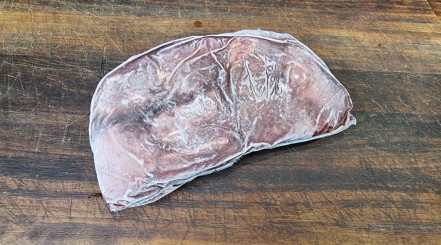
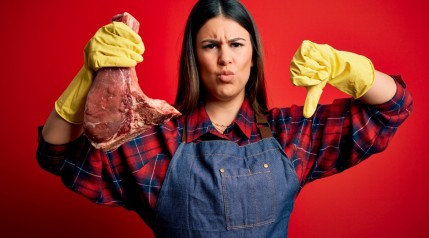

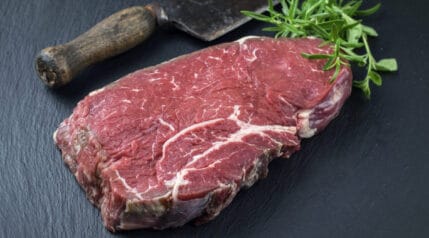
Great info in you guide, Jim. I did notice a fairly significant typo in your Doneness Chart. For blue rare you state an internal temperature of 125F which is the same as rare. I believe you intended that to be 115F. Also, for well done you state a temperature of 115F which probably should be 160F or 165F.
Thanks, Frank. That was my mistake. Fixed now!